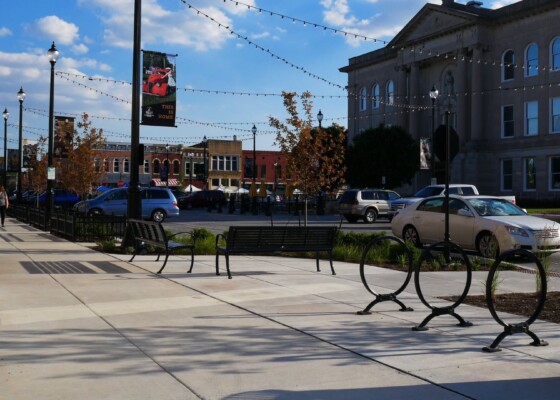Gentlemen, Start Your Autoharps
January 26, 2011I am in my last semester of classes, rapidly approaching the end of my “school” phase of graduate school, soon to become the “graduate, but for a Master’s thesis” phase. …
I am in my last semester of classes, rapidly approaching the end of my “school” phase of graduate school, soon to become the “graduate, but for a Master’s thesis” phase. My thesis research is centered on the founding and self-identification of the Old Town School of Folk Music up in Chicago. The Old Town School was founded in 1957 and, although it is thriving today like never before, I’m looking at its first decade or so and the role it played in what American cultural historians now call the folk music revival.
You probably don’t realize it, but if you learned the words to “Go Tell Aunt Rhody,” “Little Brown Jug,” or “Camptown Races,” in school, it’s because of the folk music revival. Who was that skinny old guy playing banjo with Springsteen at the Obama inaugural? Pete Seeger, one of the last living founders and brightest stars of the revival, of course. Scholars and aficionados debate endlessly about which “phase” of the revival we’re in now (Second? Fourth? Seventeenth? Does it matter?), but modern artists like Lyle Lovett, Beck, Bonnie Raitt, Ani DiFranco, and Taylor Swift all owe a debt to the folk music revival of the 50s and 60s.
In hopes of getting my thesis on, I’m rereading Romancing the Folk: Public Memory and American Roots Music by Benjamin Filene (University of North Carolina Press, 2000). Not quite a history of the revival (for that, go to Ronald Cohen’s also quite good, but a bit dry, Rainbow Quest: The Folk Music Revival and American Society, 1940-1970), Romancing looks at how various scholars and musicians (Alan Lomax, Lead Belly, Muddy Waters, Seeger) sought to both preserve and popularize traditional and rural American music. While it’s easy to write off the revival’s participants as a bunch of tambourine-wielding hippies, one shouldn’t forget that groups like the Weavers, the Kingston Trio, and Peter, Paul and Mary all had #1 hits in this era. Perhaps you’ve also heard of Woody Guthrie’s anointed heir, a mumbling guitar picker from Minnesota who calls himself Bob Dylan.
Tambourines or no, Americans were clearly buying this stuff and Filene is fascinated with the ways these artists, both black and white, were presented as both “authentic” (meaning untouched by urbanization), and commercially desirable. Lomax infamously dressed Lead Belly in prison garb and directed him to sing nothing but country blues for performances, even though he was by all accounts a dapper dresser and an accomplished singer of novelty tunes and accordionist. Muddy Waters and other bluesmen of the 50s wrangled over questions of electrification and whether to sing slower so whites could understand them, and Pete Seeger, when blacklisted from television and radio in the Red Scare, reinvented himself as the ultimate leftist subversive: a children’s performer.
Filene’s work doesn’t bear especially on Chicago, but he helps me remember that the folk music revival was, despite the sandals and autoharps, a successful commercial venture for almost two decades before the British invasion and country rock drove it off the national scene. The blues, alt-country, and indie folk all still have audiences today, but for a few postwar decades, folk music was national pop culture and changed what people listened to and what they thought about. Romancing the Folk is nicely readable and fun without getting nostalgic or trite; for anybody wondering why their mom has a dusty banjo hidden behind the sofa, this could be a good first step to understanding why.
This What-Are-You-Reading-Wednesday post was written by Erik Peterson, a research intern at the Indiana Humanities Council. He is a graduate student in the Public History program at IUPUI.

